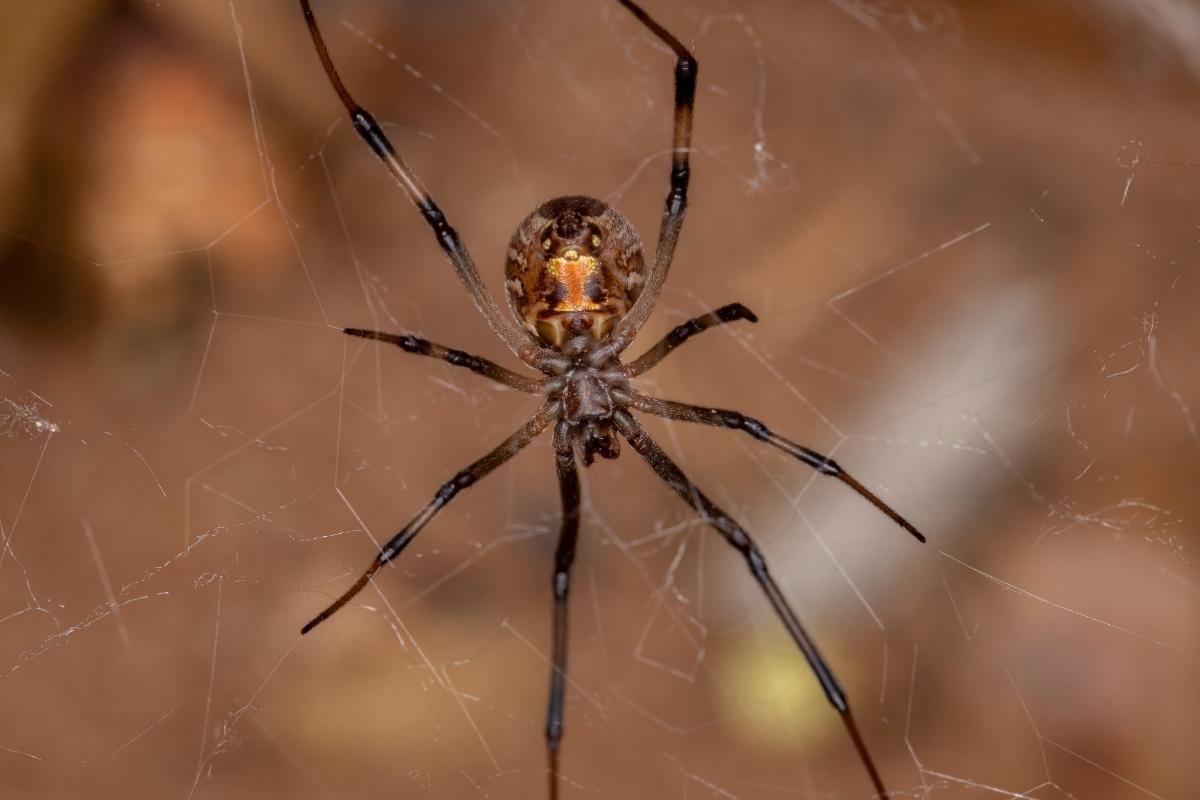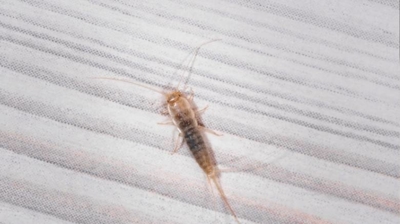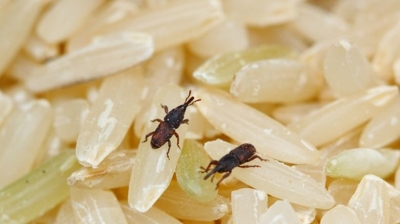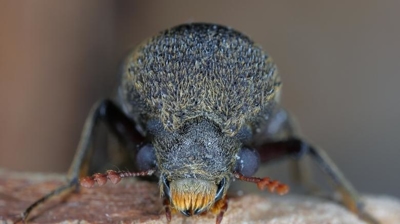
Brown Widow Spider Control Services

Are Brown Widow Spiders Harmful?
Brown widow spiders (Latrodectus geometricus) are considered harmful primarily because these spiders carry venom that can potentially cause harm to humans. While their bite is less potent than that of the more notorious black widow spider (Latrodectus mactans), the brown widow’s venom can still be dangerous in certain situations. Here are some of the ways that brown widow spiders can be harmful:
- Venomous Bite: Brown widow spiders are venomous, and their bite contains neurotoxic venom. The venom can cause symptoms similar to those of the black widow, though generally less severe. The bite can lead to localized pain, muscle cramps, sweating, and nausea.
- Potential for Severe Reactions: Although the venom is not as potent as that of the black widow, in some cases, particularly with young children, the elderly, or individuals with compromised immune systems, a bite can cause more serious effects. Severe reactions, including difficulty breathing or chest pain, are rare but possible.
- Allergic Reactions: There is also a risk of allergic reactions to the venom. For some people, the bite could cause a stronger response that might necessitate medical intervention.
- Secondary Infections: Like any wound, a brown widow spider bite can potentially become infected if not properly treated. The bite site could develop bacterial infections if it is scratched or not kept clean.
- Psychological and Emotional Effects: The fear and anxiety surrounding the presence of brown widow spiders, especially in homes, can lead to psychological distress. People living in areas with brown widow infestations may worry about their safety, leading to stress or avoidance behaviors that can interfere with daily life.
While brown widow spiders are not as aggressive as some other species, their venom, though less potent, still presents potential health risks, especially for certain individuals. If you are bitten, it's important to seek medical advice to assess the severity of the reaction and determine the best course of action.
Learn more: Do Brown Widow Spiders Bite?
Learn more: Are Brown Widow Spiders Venomous?
Brown Widow Spider Control
Hiring our professional pest control for a brown widow spider infestation is highly recommended because of the risks, complexities, and long-term effectiveness involved. Here’s why:
- Safety Concerns: Brown widow spiders are venomous, and while their bites are generally less severe than black widows, they can still cause pain, swelling, nausea, and muscle cramps. Our professionals are trained to identify spiders accurately, which is crucial since misidentifying a brown widow as a harmless spider could lead to improper handling. Our pest control technicians use protective equipment and specialized tools to safely remove spiders and egg sacs without risking bites.
- Effective Identification and Treatment: Brown widows often hide in dark, secluded places such as garages, sheds, under eaves, or in outdoor furniture. Their egg sacs can be well-hidden, making DIY detection difficult. Our professionals know the behavioral patterns of brown widows and can locate nests, webs, and egg sacs that homeowners might miss. We apply targeted insecticides and treatment strategies that specifically work on widow spiders while minimizing risk to pets and family.
- Preventing Reinfestation: Brown widows are prolific breeders; one female can produce hundreds of eggs at a time. Professional pest control provides comprehensive prevention strategies, including sealing entry points into homes, treating perimeters and potential nesting areas, and advising on clutter reduction and habitat modification. Without professional intervention, infestations can recur quickly, as missed egg sacs hatch later.
- Time and Convenience: Attempting DIY spider control can be time-consuming and frustrating, especially if spiders keep returning. Professionals can inspect, treat, and monitor the property efficiently, saving homeowners time and stress.
- Peace of Mind: Knowing a trained technician has handled the infestation provides assurance that your home is safe from hidden brown widow nests. Many companies also offer follow-up visits and warranties, which ensures ongoing protection against future infestations.
Brown widow spiders may not be as aggressive as black widows, but their venomous bite, hidden nesting habits, and rapid reproduction make professional pest control the safest, most effective solution. DIY attempts often fail to fully eradicate the problem and can put you at risk.
Learn more: How To Get Rid Of Brown Widow Spiders
What Do Brown Widow Spiders Look Like?
Brown widow spiders (Latrodectus geometricus) have a distinctive appearance, which can be described in detail as follows:
- Size: Brown widow spiders are medium-sized arachnids. Adult females typically measure around 1/2 to 1 inch (12-25 millimeters) in body length, while males are smaller, usually about half the size of females.
- Coloration: As their name suggests, brown widow spiders are primarily brown in color. Their bodies can range from light to medium brown, with some variations in shade. The abdomen often has various markings, including a characteristic orange or yellow hourglass-shaped mark on the underside. This hourglass mark is a key identifying feature.
- Abdomen: The abdomen of a brown widow spider is generally rounded and bulbous in shape, and it may have mottled or streaked patterns of light and dark brown. The hourglass mark is typically located on the underside of the abdomen and may vary in size and shape.
- Legs: Brown widow spiders have long, slender legs with distinctive banding. The legs are often covered in fine bristly hairs and are marked with alternating light and dark stripes or bands, creating a striped appearance.
- Overall Appearance: While they share some similarities with black widow spiders, brown widow spiders are generally lighter in color and have more variable markings. Their bodies are covered in fine, textured hairs, giving them a slightly fuzzy appearance.
The coloration and markings of brown widow spiders can vary somewhat between individuals and across different geographic regions. The hourglass mark on the abdomen, however, remains a consistent and distinctive characteristic of brown widow spiders. This mark, along with their overall appearance, can help in identifying them.
Where Are Brown Widow Spiders Found?
Brown widow spiders (Latrodectus geometricus) can be found in various regions around the world, but they are most commonly encountered in warm and subtropical climates. Here is an overview of where you might find brown widow spiders:
- Southern United States: Brown widow spiders are often found in the southern United States, including states like Florida, Texas, California, Arizona, and parts of the Gulf Coast. They thrive in the warm and humid conditions of these regions.
- Africa: Brown widow spiders are native to Africa and are found in several countries on the continent. They are especially prevalent in regions with warm, tropical climates.
- South America: Brown widow spiders have also been reported in parts of South America, particularly in countries with tropical or subtropical climates.
- Urban and Suburban Environments: Brown widow spiders are well-adapted to human-altered environments. They are commonly found in and around buildings, gardens, outdoor structures, and other urban or suburban areas. They often make their webs in secluded locations such as under eaves, in tree branches, among outdoor furniture, and in cluttered or undisturbed areas.
- Outdoor Structures: Brown widow spiders frequently inhabit outdoor structures such as sheds, garages, playsets, and mailboxes. They are known for creating irregular-shaped webs in these areas.
- Gardens and Landscapes: Gardens with vegetation and landscaping provide ample opportunities for brown widow spiders to build their webs. They can be found in bushes, shrubs, and tall grasses.
- Natural Habitats: While brown widow spiders are more commonly associated with human habitation, they can also be found in natural habitats, especially in regions with a warm and humid climate. They may take up residence in trees, shrubs, and other natural features.
The presence of brown widow spiders in a specific area can vary depending on local environmental conditions and the availability of suitable habitats. They are generally not aggressive and tend to avoid direct contact with humans. If you suspect the presence of brown widow spiders in or around your property, exercise caution and consider seeking our professional pest control advice as needed.
What Do Brown Widow Spiders Eat?
Brown widow spiders (Latrodectus geometricus) are carnivorous arachnids that primarily feed on a diet of insects. Their diet consists of a variety of small arthropods, and they are skilled predators that use venom to immobilize and consume their prey. Here is a detailed explanation of what brown widow spiders eat:
- Insects: Brown widow spiders are opportunistic feeders, and they consume a wide range of insects. Common prey items include flies, ants, beetles, moths, mosquitoes, and other small insects that they can capture in their webs.
- Arachnids: While they predominantly feed on insects, brown widow spiders may occasionally consume other arachnids, such as smaller spiders. This can include members of their own species or different spider species that become ensnared in their webs.
- Other Small Arthropods: Brown widow spiders may also eat other small arthropods, such as centipedes, millipedes, and small crustaceans if they become entangled in their webs.
- Feeding Behavior: Brown widow spiders are nocturnal hunters, and they typically feed at night. When a potential prey item becomes ensnared in their web, they approach it cautiously and deliver a venomous bite. The venom serves to paralyze the prey and initiate the process of digestion. The spider then wraps the immobilized prey in silk and sucks out the liquefied internal tissues, leaving behind the empty exoskeleton.
Brown widow spiders play a beneficial role in controlling insect populations, as they help reduce the numbers of potential pest species in their habitats. While their venom can be potent enough to subdue their prey, it is generally less toxic to humans compared to the venom of their close relatives, the black widow spiders. Nonetheless, it's advisable to exercise caution and avoid handling brown widow spiders, as their bites can still cause localized pain and discomfort in some cases.
Brown Widow Spider Life Cycle
The life cycle of brown widow spiders (Latrodectus geometricus) consists of several distinct stages, from egg to adult. Here is a detailed description of their life cycle:
- Egg Stage: The life cycle begins when a mature female brown widow spider lays eggs. These eggs are typically laid in silk sacs, which are distinctive in appearance, as they are spiky and round. Each sac can contain anywhere from a few dozen to several hundred eggs. The female carefully guards her egg sac(s) and may relocate them if necessary to protect them from predators and environmental stressors.
- Spiderling Stage: After a period of incubation, usually lasting a few weeks, the eggs hatch, giving rise to spiderlings. Spiderlings are tiny and resemble miniature versions of adult brown widow spiders. They typically have a pale coloration and go through a series of molts as they grow.
- Juvenile Stage: As the spiderlings grow, they enter the juvenile stage, during which they undergo a series of molts to shed their exoskeletons and increase in size. Brown widow spiderlings look increasingly like adult spiders with each molt.
- Maturation: The process of maturation from juvenile to adult typically takes several months, depending on environmental conditions and the availability of food. It may involve several molts, during which the spiders increase in size and develop their distinctive coloration and markings.
- Adult Stage: Once brown widow spiders reach maturity, they are capable of reproducing. Female brown widow spiders are larger than males and possess the characteristic hourglass-shaped mark on their abdomen. Males are smaller and lighter in color. Adult brown widow spiders are primarily nocturnal hunters and continue to feed on insects and other small prey.
- Reproduction: Adult brown widow spiders reproduce through mating. Males initiate courtship behaviors, and if successful, they transfer sperm to the female. The female then produces one or more egg sacs, each containing numerous eggs. She guards the sac(s) until the eggs hatch.
- Lifespan: The lifespan of a brown widow spider can vary, with females generally living longer than males. Females may live for several years, while males typically have shorter lifespans, usually less than a year.
Throughout their life cycle, brown widow spiders build and maintain webs for hunting and shelter. They are solitary spiders and do not live in large colonies. The reproductive cycle and the production of egg sacs are essential aspects of their life history, contributing to the perpetuation of their species.

Hear From Our Happy Customers
-
"Wonderful Service"
Wonderful service. Jarvis is great. Took care of everything I needed. Thank you!
- Henry P. -
"Great Communication"
Tech was on time, communication was great, and he accommodated my needs.
- Alonzo W. -
"Very Knowledgeable"
The tech that arrived was courteous, professional, and very knowledgeable. He was Great.
- Uerial I. -
"Exceeds Expectations"
I can’t say enough positive things about this company... The tech that came out, Jarvis went above and beyond my expectations. Thank you guys, I will continue using your services.
- Jake M. -
"Fantastic & Patient"
Jarvis was fantastic and patient. He answered my questions with an in-depth explanation and addressed all of my areas of concern. Would love for him to be my assigned tech going forward. Well done!
- Yonnette M. -
"Professional & Considerate"
I’m pleased with Miche services. Jarvis came today. Professional and considerate. Thank you!
- Judy B.



